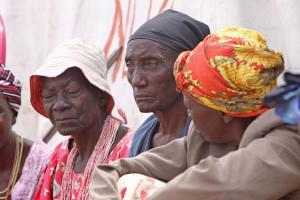Establishing the spreading of trachoma in rural Namibia
Trachoma, an infectious eye disease caused by bacterium Chlamydia trachomatis. It is the leading infectious cause of blindness worldwide. It is a public health problem in 44 countries, and is responsible for the blindness or visual impairment of about 1.9 million people. About 142 million people live in trachoma endemic areas and are at risk of trachoma blindness. The infection is transmitted by direct or indirect transfer of eye and nose discharges of infected people, particularly young children who are the principal reservoir of infection. The disease is also spread by flies.
The disease progresses through a stage of inflammation of the eye lids (trachomatous follicular, TF), and with repeated infection, the inside of the eyelid can become so severely scarred (trachomatous scarring, TS) that it turns inwards and causes the eyelashes to rub against the eyeball (trachomatous trichiasis, TT) which if not treated leads to corneal opacity (CO) and eventual blindness.
Trachoma causes blindness in poor rural communities. In Namibia, there is limited information on whether it is found in the more remote, disadvantaged populations such as San, Ovatwa, Ovahimba and Ovazemba in the Kunene and Zambezi Regions. This could partially be attributed to limited access to health care and they might have appreciable burdens of trachoma that are not being detected.
In response to the World Health Assembly commitment to eliminate trachoma by 2020, the Ministry of Health and Social Services with support from WHO conducted an assessment to determine the presence of trachoma in these two regions and whether a population based survey is needed to determine the national prevalence. Trachomatous trichiasis (TT) cases were found in communities in Zambezi Region while a lot of TF cases but few TT cases were found in Kunene Region. The assessment was conducted in Zambezi, Kunene and Ohangwena regions and examined close to 700 adults and children.
The Ministry of Health is now seeking to conduct a baseline mapping survey in the two regions where trachoma cases were found, to determine whether prevalence estimates of TF and/or TT in 1–9-and of TT in >15-year-olds exceed the threshold of its presence being a public health problem. If this is the case, public-health-level interventions will be implemented – specifically the implementation of the SAFE (Surgery for trachomatous trichiasis, Antibiotics to clear ocular C. trachomatis infection, Facial cleanliness to reduce transmission of ocular C. trachomatis, Environmental improvement, particularly improved access to water and sanitation) strategy – would be recommended.
WHO remains committed to support the government in implementing activities which will contribute to the elimination of trachoma in the country.



